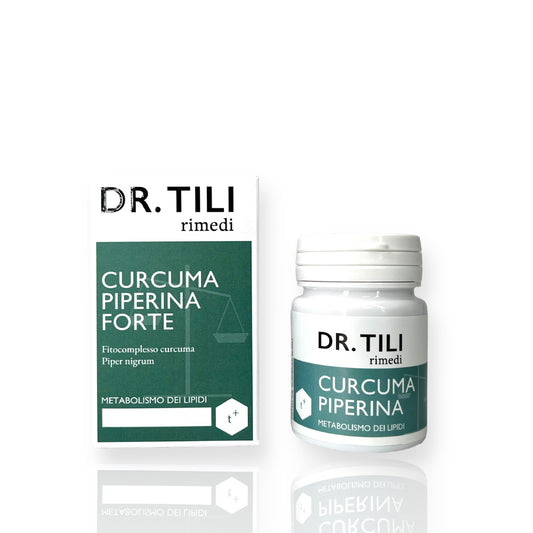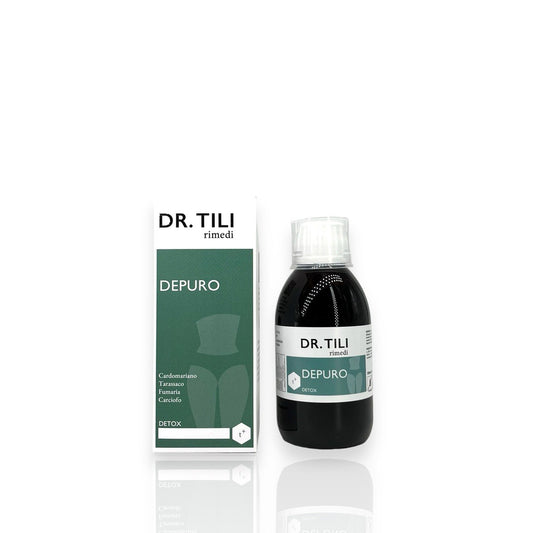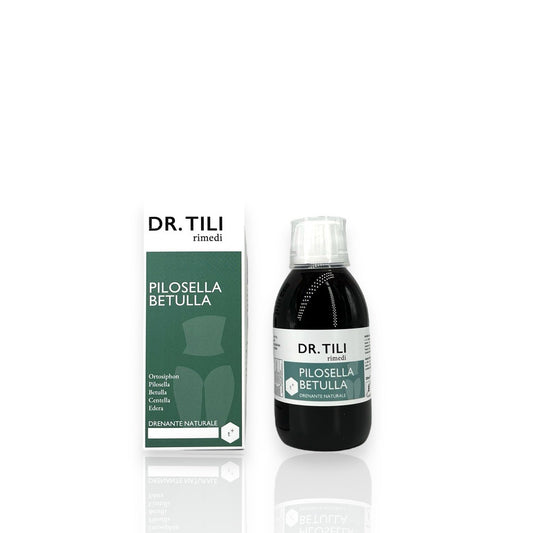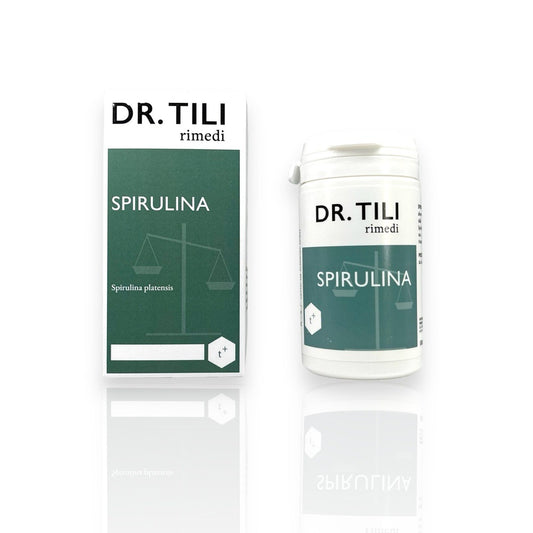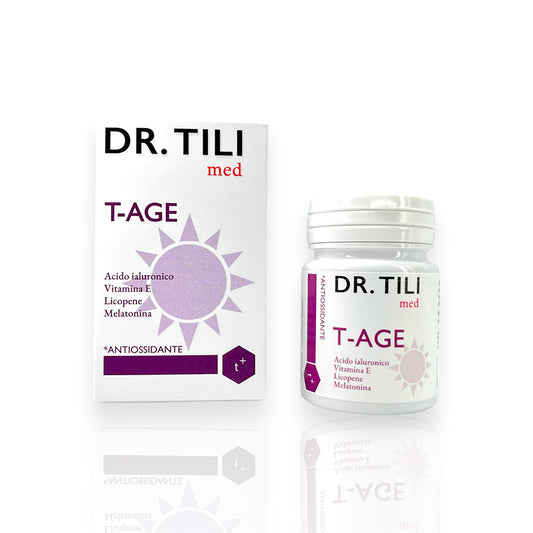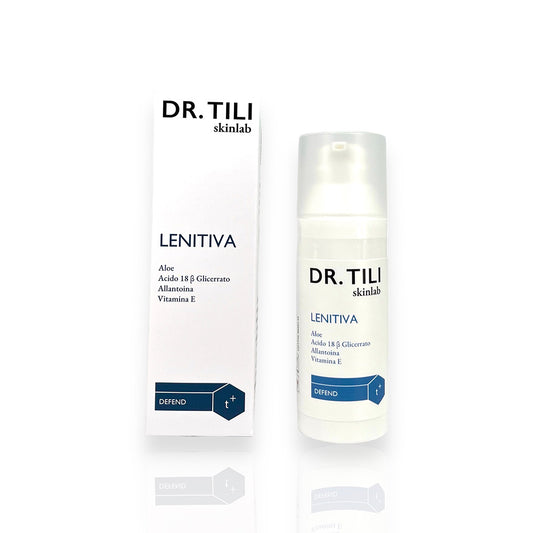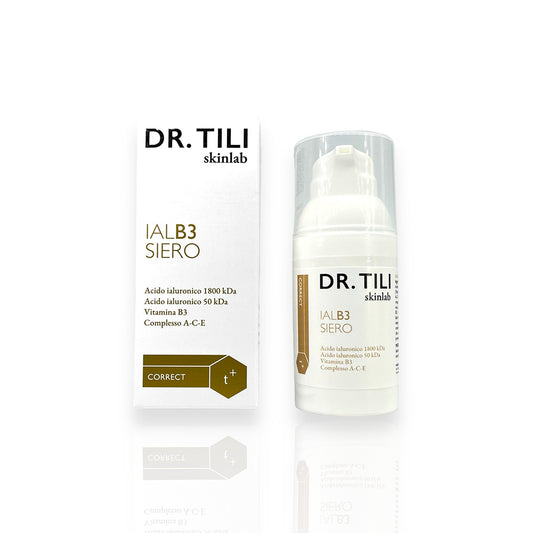UPSA ITALY Srl
Efferalgan 500mg 16 effervescent tablets
Efferalgan 500mg 16 effervescent tablets

Pickup available at Farmacia Tili
Usually ready in 24 hours
PRODUCT NET WEIGHT
PRODUCT NET WEIGHT
EAN
EAN
026608036
MINSAN
MINSAN
026608036
Efferalgan 500mg is a paracetamol -based drug with analgesic and antipyretic action, indicated for the treatment of pain and fever. The formulation in effervescent tablets allows rapid assimilation, ensuring effective relief in case of headache, muscle pain, joint pain, menstrual pain and feverish states. Thanks to its composition, it is well tolerated by the stomach and represents a valid alternative for those who have difficulty swallowing solid tablets. The tablets dissolve completely in water, offering a practical solution with a pleasant taste.
ACTIVE INGREDIENTS
Active ingredients contained in Efferalgan 500mg 16 effervescent tablets - What is the active ingredient of Efferalgan 500mg 16 effervescent tablets?
One effervescent tablet contains Active ingredient : paracetamol 500 mg. Excipients with known effect : sodium 412.27 mg; sorbitol (E420) 300 mg; sodium benzoate (E211) 60.606 mg. For the full list of excipients, see section 6.1.
EXCIPIENTS
Composition of Efferalgan 500mg 16 effervescent tablets - What does Efferalgan 500mg 16 effervescent tablets contain?
Citric acid, sodium hydrogen carbonate, sodium carbonate, sorbitol (E420) , sodium docusate, povidone, sodium saccharinate, sodium benzoate (E211) .
DIRECTIONS
Therapeutic indications Efferalgan 500mg 16 effervescent tablets - Why is Efferalgan 500mg 16 effervescent tablets used? What is it used for?
Symptomatic treatment of mild to moderate pain and febrile conditions in adults and children.
CONTRAINDICATIONS SIDE EFFECTS
Contraindications Efferalgan 500mg 16 effervescent tablets - When should Efferalgan 500mg 16 effervescent tablets not be used?
Hypersensitivity to paracetamol or propacetamol hydrochloride (paracetamol precursor) or to any of the excipients listed in section 6.1.
DOSAGE
Quantity and method of taking Efferalgan 500mg 16 effervescent tablets - How to take Efferalgan 500mg 16 effervescent tablets?
To avoid the risk of overdose, check that other drugs administered (with or without a medical prescription) do not contain paracetamol (see sections 4.4 and 4.5). An accidental overdose of paracetamol can cause serious liver damage and death (see section 4.9). Dosage Efferalgan 500 mg effervescent tablets is reserved for adults and children with a body weight of more than 13 kg (approximately 2 years). In children, the dosage schedules based on body weight must be respected and therefore it is necessary to choose the appropriate formulation. The correspondence between age and weight is only indicative. Adults The dosage is 1 effervescent tablet per administration, to be repeated, if necessary, after an interval of at least 4 hours without exceeding 6 tablets per day. In case of more intense pain, 2 effervescent tablets can be taken per administration for a maximum of 3 times a day, always respecting an interval of at least 4 hours between administrations. Paediatric population Children weighing between 13 kg and 20 kg (approximately 2 to 7 years of age): the dosage is half an effervescent tablet per administration to be repeated, if necessary, after an interval of at least 6 hours, without exceeding 3 half effervescent tablets per day for children weighing less than 15 kg and 4 half effervescent tablets per day for children weighing 15 kg or more. Children weighing between 21 kg and 25 kg (approximately 6 to 10 years of age): the dosage is half an effervescent tablet per administration to be repeated, if necessary, after an interval of at least 6 hours, without exceeding 5 half effervescent tablets per day for children weighing less than 25 kg and 6 half effervescent tablets per day for children weighing 25 kg or more. Children weighing between 26 kg and 40 kg (approximately 8 to 13 years of age): the dosage is 1 effervescent tablet per administration to be repeated, if necessary, after an interval of at least 6 hours, without exceeding 4 effervescent tablets per day. Adolescents weighing more than 40 kg ( approximately 12 years or more ): the dosage is 1 effervescent tablet per administration to be repeated, if necessary, after an interval of at least 4 hours without exceeding 6 effervescent tablets per day. Frequency of administration Regular administrations avoid oscillations in pain or fever levels. • In children, the interval between administrations must be regular, both day and night, and should preferably be at least 6 hours. • In adults and adolescents, an interval of at least 4 hours must always be respected between administrations. Maximum recommended dosage In adults and adolescents weighing more than 40 kg, the total dosage of paracetamol should not exceed 3 g per day. Renal impairment In case of severe renal impairment (creatinine clearance less than 10 ml/min), the interval between administrations should be at least 8 hours. Hepatic impairment In patients with hepatic impairment, the dose should be reduced or the interval between administrations prolonged. The maximum daily dose of paracetamol should not exceed 2 g in the following cases: • adults weighing less than 50 kg; • chronic or compensated active liver disease, in particular those with mild to moderate hepatic impairment; • Gilbert's syndrome (familial hyperbilirubinemia); • chronic alcoholism; • chronic malnutrition (low reserves of hepatic glutathione); • dehydration. Duration of treatment After 3 consecutive days of treatment, medical evaluation is necessary. Method of administration Oral use. Dissolve the effervescent tablet completely in a glass of water. Do not chew or swallow the tablet whole.
CONSERVATION
Storage Efferalgan 500mg 16 effervescent tablets - How to store Efferalgan 500mg 16 effervescent tablets?
This medicinal product does not require any special storage conditions.
WARNINGS
Warnings Efferalgan 500mg 16 effervescent tablets - About Efferalgan 500mg 16 effervescent tablets it is important to know that:
During treatment with paracetamol, before prescribing any other drug, check that it does not contain the same active ingredient, since if paracetamol is taken in high doses, serious adverse reactions may occur. Instruct the patient to contact the doctor before combining any other drug (with or without a prescription) (see paragraph 4.5). In case of chronic treatment with drugs that can determine the induction of hepatic monooxygenases or exposure to substances that can have this effect, see paragraph 4.5. High or prolonged doses of the product can cause high-risk liver disease and alterations, even serious, to the kidney and blood. In case of prolonged use, it is advisable to monitor liver and kidney function and blood count. Paracetamol should be administered with caution in the following cases: • patients with mild to moderate hepatic insufficiency (including Gilbert's syndrome), severe hepatic insufficiency (Child-Pugh >9), acute hepatitis, concomitant treatment with drugs that alter liver function, glucose-6-phosphate dehydrogenase deficiency, haemolytic anaemia; • patients with renal insufficiency; • chronic alcoholism, anorexia, bulimia or cachexia, chronic malnutrition (low reserves of hepatic glutathione), dehydration, hypovolaemia. Alcohol consumption during therapy is not recommended. Prolonged (continuous or repeated) use of analgesics (>3 months) in patients with chronic headache may increase or worsen headache. Medication-Overuse Headache (MOH) should not be treated with an increase in dosage. In these cases, medical evaluation is necessary. Paracetamol can cause serious skin reactions such as acute generalised exanthematous pustulosis, Stevens-Johnson syndrome and toxic epidermal necrolysis, which can be fatal. Patients should be informed of the signs of serious skin reactions, and the use of the medicine should be discontinued at the first appearance of skin rash or any other sign of hypersensitivity. In case of allergic reactions, administration should be stopped. Important information about some of the ingredients This medicine contains: • 412.27 mg sodium per tablet, equivalent to approximately 20% of the WHO recommended maximum daily intake of 2 g sodium for an adult. This medicine is therefore considered high in sodium. To be taken into account by patients on a controlled sodium diet; • 300 mg sorbitol (E420) per tablet equivalent to 300 mg/3257 mg: patients with hereditary fructose intolerance should not be given this medicine; • 60.606 mg sodium benzoate (E211) per tablet, equivalent to 60.606 mg/3257 mg.
INTERACTIONS
Interactions Efferalgan 500mg 16 effervescent tablets - Which medicines or foods can modify the effect of Efferalgan 500mg 16 effervescent tablets?
Paracetamol may increase the possibility of adverse effects if administered simultaneously with other drugs. Diagnostic tests The administration of paracetamol may interfere with the determination of uric acid (by the phosphotungstic acid method) and with that of glycaemia (by the glucose-oxidase-peroxidase method). Anticoagulants The concomitant use of paracetamol with coumarins, including warfarin, may lead to changes in INR values. In such cases, more stringent monitoring of INR values should be performed during concomitant use and after stopping treatment with paracetamol. Monooxygenase-inducing drugs Use with extreme caution and under close supervision during chronic treatment with drugs that can determine the induction of hepatic monooxygenases or in case of exposure to substances that can have this effect (for example rifampicin, cimetidine, antiepileptics such as glutethimide, phenobarbital, carbamazepine). Phenytoin Concomitant administration of phenytoin may result in decreased efficacy of paracetamol and an increased risk of hepatotoxicity. Patients treated with phenytoin should avoid high and/or chronic doses of paracetamol. Patients should be monitored for evidence of hepatotoxicity. Probenecid Probenecid causes at least a two-fold reduction in the clearance of paracetamol by inhibition of its conjugation with glucuronic acid. A reduction in the dose of paracetamol should be considered if administered concomitantly with probenecid. Salicylamide Salicylamide may prolong the elimination half-life (t 1/2 ) of paracetamol. Flucloxacillin Caution is advised when paracetamol is administered concomitantly with flucloxacillin, due to the increased risk of high anion gap metabolic acidosis (HAGMA), particularly in patients with a risk factor for glutathione deficiency such as severe renal impairment, sepsis, malnutrition and chronic alcoholism. Careful monitoring for the onset of acid-base disturbances, particularly HAGMA, including urinary 5-oxoproline is recommended. Concomitant administration with chloramphenicol may increase the half-life of paracetamol, with the risk of increasing its toxicity. Drugs that slow gastric emptying (e.g. anticholinergics) may cause antral stasis, delaying the absorption of paracetamol and therefore the onset of the analgesic effect. Use with extreme caution in patients treated with zidovudine.
SIDE EFFECTS
Like all medicines, Efferalgan 500mg 16 effervescent tablets can cause side effects - What are the side effects of Efferalgan 500mg 16 effervescent tablets?
The table below lists adverse reactions associated with the administration of paracetamol, resulting from post-marketing surveillance. Adverse reactions are listed by System Organ Class, using MedDRA terminology (insert PT). The frequency of the adverse reactions reported below is not known.
| Classification by Systems and Organs | MedDRA Terms |
| Pathologies of the haemolymphopoietic system | Thrombocytopenia, Neutropenia, Agranulocytosis, Leukopenia, Anemia |
| Gastrointestinal disorders | Diarrhea, Abdominal pain, Gastrointestinal reactions |
| Hepatobiliary pathologies | Hepatic failure, Hepatic necrosis, Hepatitis, Hepatic function abnormal |
| Immune system disorders | Anaphylactic reaction, Anaphylactic shock, Angioedema, Hypersensitivity, Laryngeal edema |
| Diagnostic tests | Abnormal INR (see section 4.5), Increased liver enzymes |
| Skin and subcutaneous tissue disorders | Urticaria, Erythema, Erythema multiforme, Rash, Acute generalized exanthematous pustulosis, Toxic epidermal necrolysis, Stevens-Johnson syndrome, Purpura |
| Nervous system disorders | Headache |
| Ear and labyrinth pathologies | Vertigo |
| Vascular pathologies | Hypotension (especially following anaphylaxis) |
| Kidney and urinary disorders | Acute renal failure, Interstitial nephritis, Hematuria, Anuria |
Reporting of suspected adverse reactions Reporting suspected adverse reactions that occur after authorisation of the medicinal product is important. It allows continued monitoring of the benefit/risk balance of the medicinal product. Healthcare professionals are asked to report any suspected adverse reactions via the national reporting system at “https://www.aifa.gov.it/content/segnalazioni-reazioni-avverse”.
OVERDOSE
Efferalgan 500mg 16 effervescent tablets Overdose - What are the risks of Efferalgan 500mg 16 effervescent tablets in case of overdose?
There is a risk of intoxication, especially in patients with liver disease, in chronic alcoholism, in patients with chronic malnutrition, and in patients receiving enzyme inducers. In these cases, overdose can be fatal. Symptoms generally appear within the first 24 hours and include: nausea, vomiting, anorexia, pallor, malaise and diaphoresis. Overdose with acute ingestion of 7.5 g or more of paracetamol in adults and 140 mg/kg body weight in children causes hepatic cytolysis that can progress to complete and irreversible necrosis, resulting in hepatocellular failure, metabolic acidosis and encephalopathy, which can lead to coma and death. At the same time, increased levels of liver transaminases (AST, ALT), lactate dehydrogenase and bilirubin are observed, together with a decrease in the prothrombin value, which can appear 12 to 48 hours after administration. Clinical symptoms of liver damage usually appear after one or two days, and reach a maximum after 3-4 days. Rare cases of acute pancreatitis have been observed. Emergency measures • Immediate hospitalization; • Before starting treatment, take a blood sample to determine plasma levels of paracetamol, as soon as possible, but not earlier than 4 hours after the overdose; • Rapid elimination of paracetamol by gastric lavage; • Treatment following an overdose includes administration of the antidote, N-acetylcysteine (NAC), intravenously or orally, if possible, within 8 hours of ingestion. NAC may, however, provide some protection even after 16 hours; • Symptomatic treatment. Liver tests should be performed at the start of treatment and repeated every 24 hours. In most cases, liver transaminases return to normal within one to two weeks with full recovery of liver function. In very severe cases, however, liver transplantation may be necessary.
PREGNANCY AND BREASTFEEDING
If you are pregnant or breast-feeding, think you may be pregnant or are planning to have a baby, ask your doctor for advice before taking Efferalgan 500mg 16 effervescent tablets.
Clinical experience with the use of paracetamol during pregnancy and breastfeeding is limited. Pregnancy A large amount of data on pregnant women indicate neither malformative nor fetal/neonatal toxicity. Epidemiological studies on neurodevelopment in children exposed to paracetamol in utero show inconclusive results. If clinically necessary, paracetamol can be used during pregnancy, however it should be used at the lowest effective dose for the shortest possible duration and with the lowest possible frequency. Breastfeeding Paracetamol is excreted in small amounts in breast milk. Rash has been reported in breast-fed children. However, the administration of paracetamol is considered compatible with breastfeeding. Caution should, however, be exercised when administering paracetamol to breast-feeding women.
DRIVING AND USE OF MACHINERY
Taking Efferalgan 500mg 16 effervescent tablets before driving or using machines - Does Efferalgan 500mg 16 effervescent tablets affect driving or using machines?
The medicine does not alter the ability to drive vehicles or use machines.



